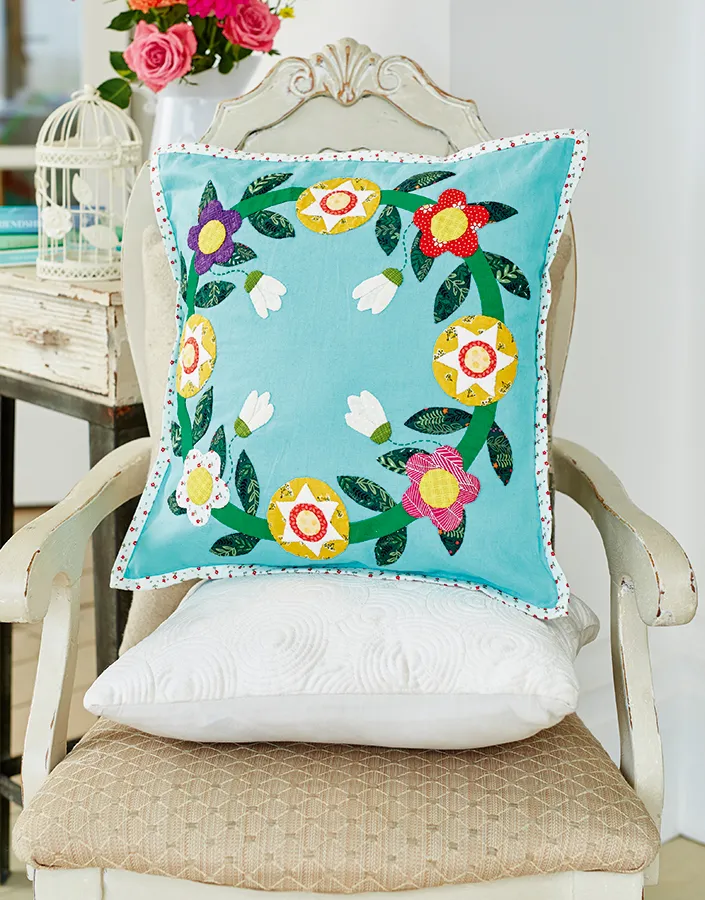Celebrate the new season with this pretty spring cushion cover! Enjoy some slow sewing as you create this garland of springtime flowers featuring narcissus, primrose and snowdrops. This is the first in a series of four we will be bringing you throughout the year with different applique tips and tricks. You’ll want to display this floral wreath all year round! To give your cushion an extra edge, shake up the symmetrical pattern by using four different fabrics for the flowers. Jo is going to show you how to turn your favourite fabrics into this spring cushion cover but first, make sure you read through our quilting for beginners guide. Our guide and our how to quilt page are full of tips on how to quilt like a pro.
I have always loved the traditional ‘Rose of Sharon’ type applique quilts and wanted to update the garland design with a whole range of different flowers and leaves to make the project more interesting. For the Spring version I was of course spoilt for choice, but I had to include snowdrops as they are such precious early signs of garden life returning. Primroses are a welcome return to colour and my stylised narcissus are just a fabulous shape to depict. Over the course of the next year we will feature four seasonal applique designs as cushions, so keep an eye out for the next design in the series.
Jo Avery

You will need
- Linen or linen mix fabric for background and backing, ½yd
- Assorted green fabrics, solid and prints, one (1) fat quarter in total
- Assorted white fabrics, solid and prints, 14in square in total
- Assorted yellow and orange fabrics, 8in x 12in in total
- Scraps of bright coloured fabrics for flowers, 3½in square each
- Pencil/removable pen
- A small amount of dark green perle cotton 8
- Binding fabric, 5in x WOF
- Straight-edged tracing wheel (optional)
- Small piece of leather or oilcloth (optional)
- 16in cushion pad
Finished size 16in square. Notes We used Essex Linen in Medium Aqua by Robert Kaufman for the background and backing. Depending on size and shape the pattern pieces have either ¼in or 3/₁₆ in seam allowances. Assume all are ¼in unless stated otherwise.

